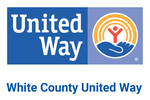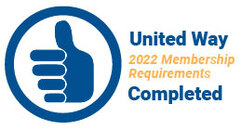|
Last time we discussed collaboration and its power in accomplishing goals and projects for our community. Recently, Ann Voelz, IU student in psychology and summer intern for the White County United Way, discussed collaboration and pro-social/altruistic behavior with White County United Way Junior Board.
As we discussed last week, collaboration is working together for a common cause or purpose. Taking you back to sociology and psychology classes, prosocial behavior is performing an act that helps someone else. Altruistic behavior is helping someone even when it hurts you or has no benefit for you. There are various theories of why people help others. One is the social exchange theory which can be summed up, “You scratch my back, I’ll scratch yours.” By helping someone, you put them in your debt, and they owe you. Princess Diana summed this up by saying, “Carry out a random act of kindness, with no expectation of reward, safe in the knowledge that one day someone might do the same for you,” which is very similar to the idea of paying it forward. “I will help you, but I expect to paid back sometime in the future by you or someone else.” Another theory is the idea of empathy-altruism when you help someone with no expectations of being paid back or receiving anything in return. In her presentation Ann mentioned that people in large groups are less likely to help an individual. Research has shown that the larger the crowd of observers or bystanders, the less likely individuals are to help. They might think that if no one else is reacting, it must not be a problem, or in a group they feel less personal responsibility to act. Ann presented the idea that there five things that need to happen to cause a person to offer assistance. An individual must:
One of our first jobs was to make the community aware that substance use is a problem in our community. Through presentations, social media, and billboard campaigns, we have worked to increase awareness of substance use, and create a sense of urgency as we present statistics and stories of those ensnared in addiction. The next step was to help people realize that even though they may not have a personal connection to someone mis-using substances, their involvement would benefit the community at large by increasing resources to help achieve and maintain recovery, and helping former users become healthy, productive citizens. Research shows that if someone has a personal connection to the problem (which one in four families does), they are more likely to help. We have found that to be true for our work in the United Council on Opioids, as many of our taskforce members have experienced the difficulties of substance use personally or through a loved one. Once people realize there is a problem and solving it would benefit the community, the next job is showing them how their skill set, expertise, resources and knowledge could contribute to the solution. The challenge is that people are less likely to volunteer in a large meeting and especially in a virtual meeting. And the final step is assisting them in plugging into the work. When people believe their actions will make an impact on others, make progress towards a valued goal, change the community for the better, they are more likely to help. If you are interested in joining our work to increase awareness, access to services, and helping those in recovery, please contact our United Way director at [email protected]. Whatever cause is close to your heart, get involved in community efforts and benefit our community. Working together, we make a difference.
0 Comments
Your comment will be posted after it is approved.
Leave a Reply. |
AuthorLynn Saylor is the AmeriCorps member working with the United Against Opioid Abuse Initiative alongside the White County United Way. She is a major facilitator of the United Council on Opioids serving White County and a regular contributor to local media. Archives
October 2020
Categories
All
|

 RSS Feed
RSS Feed
